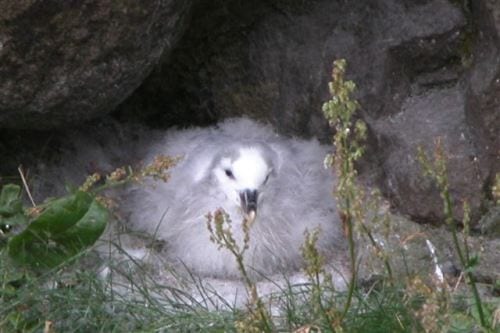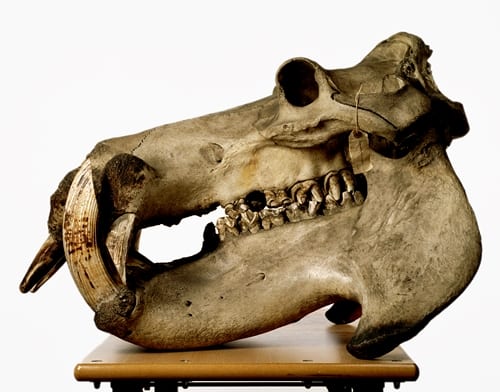Specimen of the week 292: the horned lizard
By Will J Richard, on 19 May 2017
The Mexican plateau horned lizard (Phrynosoma orbiculare) is a small reptile native to the high plateau of Central Mexico. They are almost spherical, about the size of a 50p coin, and have two characteristic horn-like projections on their snout. They seem pretty harmless… THIS IS NOT THE CASE. As a last resort the tiny lizards can shoot streams of pressurised blood from the corners of their eyes, spraying predators over a metre and half away. At first this seemed the single grimmest thing I’ve ever read about any animal but it got me looking at other disgusting ways species choose to defend themselves. These are a few of my “favourites”…
Hairy frogs
These African frogs are named for the frond-like projections on the legs of the breeding males. This is odd in itself, but the frogs get even odder. In a tight spot they will deliberately break the bones in their hands and feet before forcing them through their muscle and skin to make “claws” with which to fight.
Hognose snakes
In an effort to avoid being eaten these flat-faced North American snakes fake dramatic death throes then lie still. That’s just sensible you might think, and not disgusting, but at the same time the theatrical snakes exude a chemical cocktail that mimics the smell of rotting flesh. So they smell dead too… and that’s why they made the list.
Fulmars
Even if the adult birds aren’t around the chicks are more than able to take care of themselves. When a predator gets too close they are met with a torrent of vomited semi-digested raw fish laced with sticky oils that matt the feathers of other birds together. This leaves the attacker unable to fly, or swim, and can be fatal.

fulmar chick; image by User:Erik via Wikimedia Commons; CC BY-SA 3.0
Sea cucumbers
Don’t anger a sea cucumber. Although these cylindrical lumps seem lifeless they can really make a point when in a corner. A distressed sea cucumber will fling its intestines out of its anus, forming a sticky net that entangles a potential predator – think party popper. The sea cucumber can regrow its digestive system, taking a few weeks to “reload”.
Skunks
The classic example of a disgusting defence, these black and white relatives of weasels empty the contents of the two glands that sit one each side of their anus. This forms a noxious spray, laced with sulphurous chemicals that can be smelt by humans up to a mile away. Skunks are accurate at three metres and can usually send other animals running just by turning round.
Hippopotamuses
Hippos are included in this list for two reasons: their halitosis and the way they mark their patch. Their breath speaks for itself, it stinks… it really stinks, and yet the way hippos keep their personal space personal is even grimmer. They poo, and I can’t hold that against them, but at the same time they whirl their stubby tails like little propellers flinging their faeces in the widest possible arc. I imagine it’s like forgetting to put the lid on a blender…
Will Richard is Visitor Services Assistant at the Grant Museum of Zoology
 Close
Close




